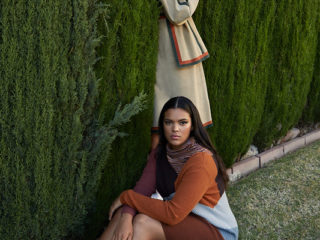The thing about holidays is they are man-made, mostly contrived celebrations. The exception would be holidays that are sacred times of remembrance or holy days for different faiths.
Yet, most holidays are social or political constructs. They are days that a city, country or community decides mean something to them. Humans like to set aside days to remember great or momentous events in their cultures, and they have been doing it pretty much since the beginning of time.
The good news is that just because a holiday is made up doesn’t make it meaningless. How else would we remember to stop the clock on our busy schedules? Holidays like Mother’s Day and the Fourth of July help us create a shared culture by reminding us to take the time for important things—like telling our families we love them or remembering soldiers and civil rights activists who fought for our rights.
What relationship is more important to celebrate than your relationship with your significant other? Enter Valentine’s Day. Whether you love Valentine’s Day or you can’t stand the cheesiness of a dozen red roses, it’s always fun to look into how we’ve made this holiday what it is.
The History: Drunk Ancients and Romantic Martyrs
The Valentine’s Day we know today has evolved out of an unlikely mix of drunken Romans, saints and poets. Mid-February in ancient Rome meant it was time for Lupercalia, a wild fertility festival that lasted for days and included plenty of drinking and occasional matchmaking. There is not a direct connection from the pairing off that happened during Lupercalia to the dinner date your boo may or may not be planning for you. It wasn’t until several hundred years after Europe’s shift to Christianity that Valentine’s Day began to emerge.
One of the most popular Valentine’s Day origin myths is the story of a brave martyr who performed marriages for Roman couples after emperor Claudius II banned the entire institution. Legend has it the misguided emperor believed outlawing marriage would turn his men into fierce fighters, soldiers who weren’t afraid to die and leave a wife behind. The Valentine of this story, later sainted, is more of a collage than a historical figure.
There were actually two men named Valentine who were executed on February 14 under Claudius II, and they were both later sainted by the Catholic Church. Since then, around a dozen more St. Valentines, including a female St. Valentina, have been added to the roster. However, the Catholic Church stopped venerating St. Valentine in 1969 because the history is so fuzzy.
Chaucer was probably the first Western writer to tie Valentine’s Day to romance. In his poem, “Parliament of Foules,” Chaucer makes the rather random assertion that February 14 is the day birds and humans find their one true love. We don’t really know why he picked this day, but here we all are!
Chocolate and Roses: A Valentine’s Day Tradition
If Chaucer did invent Valentine’s Day in the 14th century, then he could never have invented the marketing frenzy it would become. According to the National Retail Federation (NRF), Americans spent $20 billion on Valentine’s Day celebrations last year alone.
Some of the traditional gifts actually do have hundreds of years of historical precedent. The oldest Valentine’s Day card on record was sent by a Duke imprisoned in the Tower of London in 1415, and red roses have symbolized romantic love in Western culture for centuries.
The chocolates in a heart-shaped box cliché is also an old one. Chocolate manufacturer Cadbury began the trend in the mid-19th century, and Victorian chocolate boxes have become a collector’s item in some circles.
The Emphasis on Romantic Love
And what about those of us who don’t have an S.O. to celebrate? Why not treat yourself?
While we do spend billions on jewelry, analysts are also seeing people spend money on non-romantic Valentine’s Day gifts. It seems like there’s been an explosion of Galentine’s Day parties in the last few years where women spend time celebrating each other and elevating their friendships, which is absolutely lovely.
Nearly $900 million of last year’s Valentine’s Day spending was on pets alone according to the NRF. Valentine’s Day is a great excuse to take some time to treat yourself and the people you love (even if you don’t love them like that).
The Meaning of Valentine’s Day
So Valentine’s Day is mostly made up. What does that mean for your would-be revels? Honestly, whatever you want them to mean. That’s kind of the fun of celebrating a constructed holiday like this. The way we’ve celebrated Valentine’s Day has changed so much that you’re free to do whatever makes your significant other feel most loved. It’s never a bad idea to celebrate your person, but there aren’t really rules for how you have to show your affection.
Does your significant other like chocolates and roses? Go for the classics. Would they rather get a succulent or a book? Personalize it. Do they reject the whole idea of spending money on Valentine’s Day? Write them a letter. However you do it, it’s worth taking a minute to celebrate the people you love.
Go forth and eat all those chocolates, or you know, don’t.
Share the love this Valentine’s Day with the Darling Conversation Cards. Every card has question prompts for you and your loved ones to enrich your relationships with deeper dialogue.
Do you celebrate the conventional meaning of Valentine’s Day? What myths or common stereotypes are associated with the day?
Image via Chris and Sarah Roads of We Are The Roads, Darling Issue No. 7












1 comment
I don’t think I ever even looked into the historical meaning of Valentine’s Day before! But whether or not I have an SO, I always choose to treat myself and my loved ones every time February 14th rolls around. 🙂
–
Charmaine Ng | Architecture & Lifestyle Blog
https://charmainenyw.com